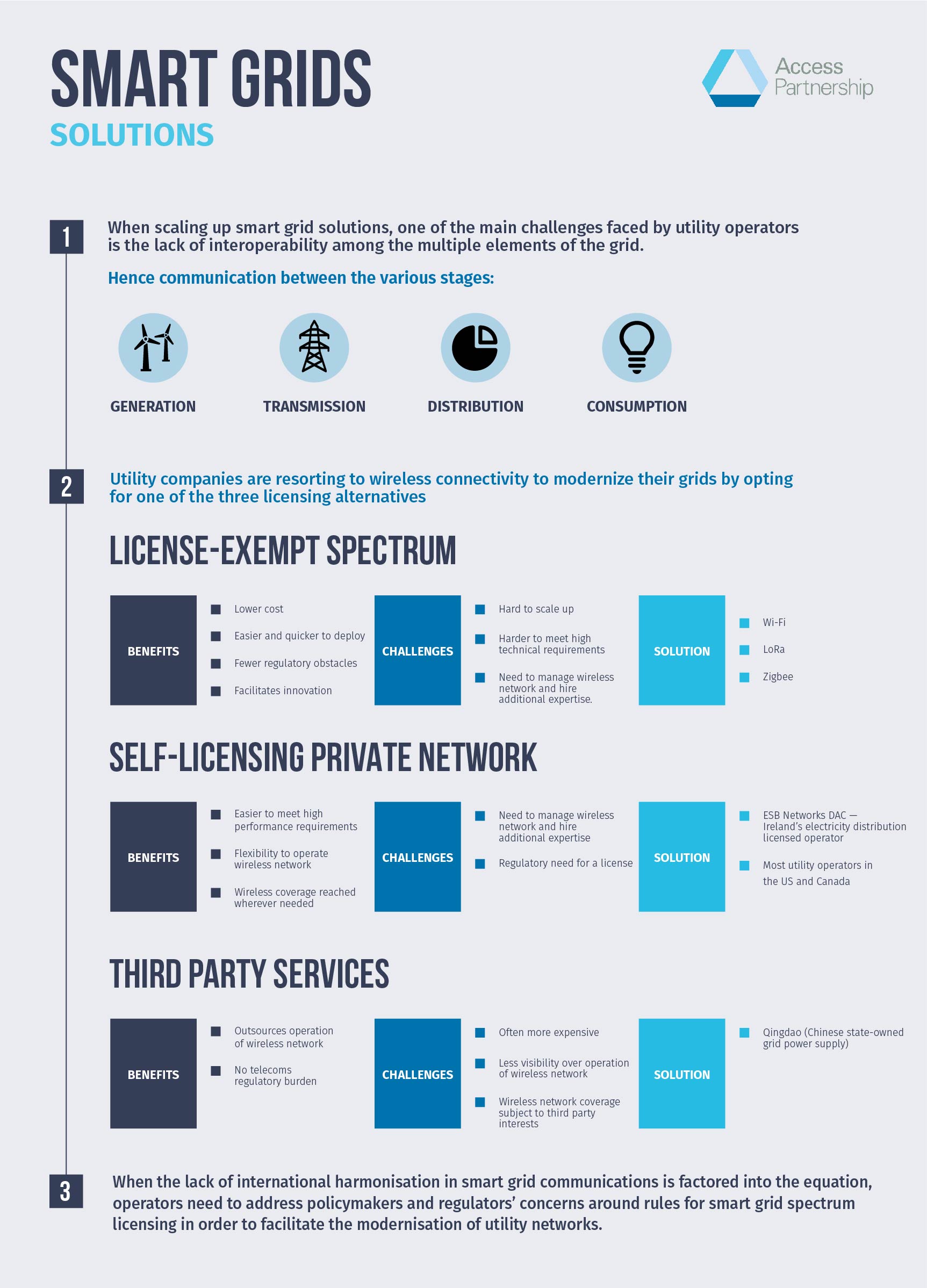

In what many are calling a Sustainability Super Year, policymakers are rushing to integrate technical solutions into the value chain of all industries. An obvious focus of this movement has been energy markets, signalled by efforts to promote efficiency via smart grids. For national energy systems, smart grids provide the type of grass-root efficiency and consumer proactivity that is required to reduce CO2 emissions in ever-expanding cities. The development of smart metering started about a decade ago, both in mature energy markets (with the EU’s Strategic Energy Technology Plan) and developing economies; countries such as Brazil (ANEEL’s net metering system) and India (Smart Cities Mission) are bracing themselves for COP targets. Now that renewable energy uptake is a global reality, and provided that metering systems are progressively smarter, multi-item-communications within national grids presents the biggest challenge; not only from a technical standpoint, but from a regulatory angle as well. For this, policymakers must facilitate wireless connectivity and apply the most suitable licencing strategy for their energy supply chain.
When scaling up smart grid solutions, one of the main challenges faced by utility operators is the lack of interoperability among the multiple elements of the grid. Installing thousands of intelligent power transformers, capable of responding to local measurements in order to regulate the provided voltage, is a challenging task itself. Finding ways to communicate all of these measurements to a control centre, so that the transformers are coordinated to not only to improve local performance, but maintain good performance throughout the network, is even more challenging. To allow the exchange of information and more informed decision-making, communication between the various stages in generation, transmission, distribution, and consumption is paramount. In fact, different parts of a smart grid require different communication network characteristics. While metering and charging applications may present few obstacles in terms of latency and data , generation and control-in-power networks require ultra-low latency and ultra-reliable communications, combined with high levels of security. Management and monitoring applications also impose significant requirements for networks capable of transporting high volumes of data from thousands of devices.
Different requirements mean that diffuse approaches have been implemented throughout the industry. While power line communications, fibre optics and other wired technologies are widely used, a growing number of utilities are resorting to wireless connectivity to modernize their grids and, as such, are opting for one of the three licensing alternatives described in Table 1. IoT technologies such as Wi-Fi, LoRa and Zigbee have become popular due to their low cost and regulatory simplicity. Since they operate in license-exempt spectrum, they can be more quickly and easily deployed without the need for special licenses from telecommunications regulatory bodies. Utilities also have more freedom to innovate and tailor existing technologies to their needs when choosing to operate their networks in license-exempt bands. Therefore, wireless networks in the 2.4 GHz, 5GHz, 900 MHz and other unlicensed bands have been used globally for automated metering infrastructure and some distribution automation.
| Benefits | Challenges |
License-exempt spectrum |
|
|
Self-licensing private network |
|
|
Third party services |
|
|
Its interference environment, however, means that the requirements expected from smart grid communications may not be met by shared, license-exempt spectrum. Licensed private networks, often using LTE or other cellular technologies, are the solution that many utility companies are banking on to meet the demanding smart grid communication requirements. Hence, regulators have responded to increasing pressure from utility companies to introduce dedicated spectrum for their private networks. For example, 6 MHz of UHF spectrum have been awarded to ESB Networks DAC, Ireland’s electricity distribution licensed operator. The bidding process explicitly aimed at providing spectrum for water, electricity, and gas utility operator’s private networks. Most utility operators in the US and Canada manage their own communications networks and, thus, the FCC made 6 MHz of spectrum in the 900 MHz band available for private networks, including utilities.


In other parts of the world, utilities are choosing to partner with mobile communications operators, using their 4G or 5G networks to transport smart grid data. Even though it provides less flexibility, this option relieves the burden of also managing a communication network for the utility operator. In China’s smart grid pilot project, the Qingdao state grid power supply company, China Telecom and Huawei successfully built China’s largest 5G-powered smart grid pilot network in Qingdao. Using Huawei’s end-to-end standalone 5G network technologies, including automated dynamic 5G network slicing, the project produced the “industry’s first report on the technical and commercial use of 5G network slicing for power grids.” This, along with other successes, has prompted the creation of the 5G smart grid project on 3GPP to standardize 5G network architectures for smart grid applications. Efforts involve defining how 5G can be used for remote control, tele-protection, metering, distributed automation, demand response, and distribution management in smart grids. This standardization will provide a foundation for the development and deployment of 5G smart grid technologies across the globe.
When deciding between resorting to license-exempt spectrum, self-licensing or hiring third party services, utility operators have to weigh up a number of benefits and challenges, as summarized in Table 1. Moreover, different smart grid applications may be more easily implemented following different approaches. When the lack of international harmonisation in smart grid communications is factored into the equation, operators may struggle to address policymakers and telecommunications regulators’ concerns around rules for smart grid spectrum licensing. These concerns must be addressed to facilitate the modernisation of utility networks.
To navigate this increasingly challenging space, Access Partnership assists utility companies with regulatory engagement, helping to bring about the changes the sector needs for appropriate connectivity schemes under Smart Grid strategies. By guiding companies through licensing processes for their own private networks, representing utilities in telecommunications regulation-making processes, or managing thought leadership projects, Access Partnership is a powerful ally to the smart grid industry. Our extensive experience in regulatory engineering, market access and telecommunications governance make us a useful interface between smart grid operators and ICT regulatory organizations.